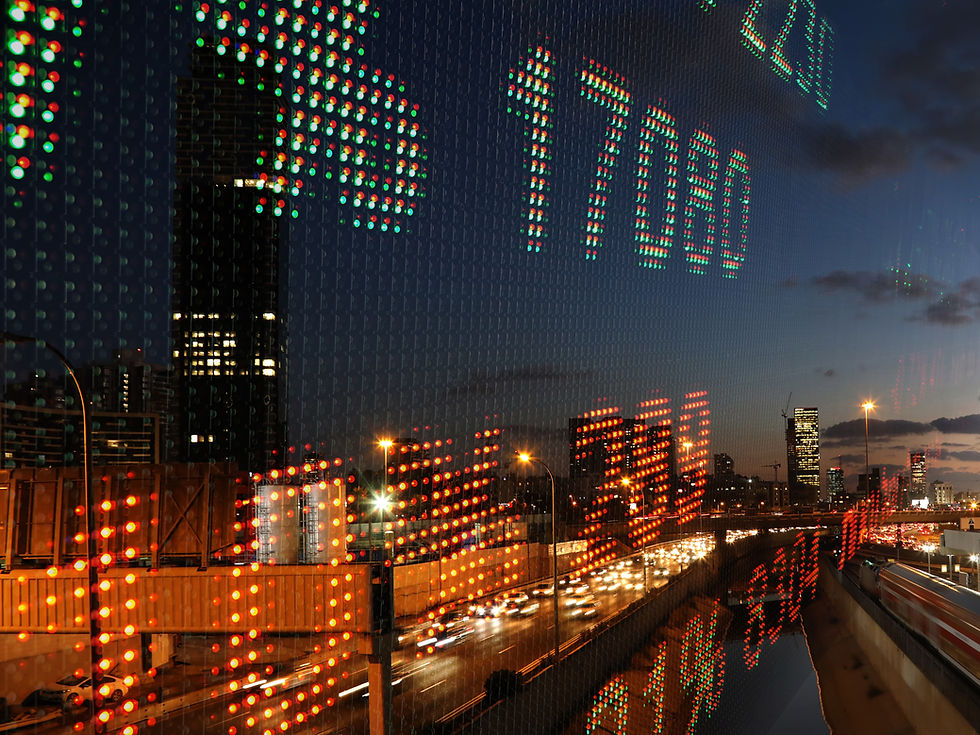September Investment Newsletter
- Claude Machiha
- Oct 3, 2022
- 3 min read
Updated: Oct 17, 2022
UK panic has officially begun with the Pound Sterling being at its lowest pairing against the Dollar since 1985; the South African Reserve Bank's MPC stays focused on "anchoring" inflation and are expected to raise the repo rate to 6.75% by year's end; Eurozone business activity declined for the second month in a row in August due to shrinking consumer demand, but ECB President Madame Lagarde optimistic; Australia leading the developed world currently with a handsome 2022 3rd quarter GDP growth of 0.9%.

USD: US TERTIARY SECTOR CONTINUES TO GROW
The US economy continues to somewhat flourish, with strong order growth and increasing payroll levels continuing to rise, as well as supply chain bottlenecks and price pressures declining. Despite the harrowing outlook pundits had for the first half of 2022, the US economy most probably won't be going into recession any time soon, ceteris paribus.
The US Purchasing Manager's Index (PMI) increased in August with a reading of 56.9 from 56.7 in July. The Institute for Supply Chain Management (ISM) reported new orders by services businesses rose to 61.8 from 59.9 in July. Although US GDP contracted in Q3, trade added 1.42 percentage points in Q2's GDP. The Fed raised its policy rate by 75 basis points (bps) at its most recent Sept. 20-21 session.
EUR: ECB RAISES KEY INTEREST RATES BY 75BPS
Scares of the deepening cost of living crisis have reflected in the contraction of Eurozone business activity for a second month in a row since July, as customer demand declines. S&P's final composite PMI fell to an 18-month low of 48.9 in August from July's 49.9. Eurozone retail sales however, rose in July by 0.3% month-on-month, but not as great as hoped for.
German industrial orders fell for the sixth month in a row in July but expected growth of 1.1%-1.4% is still held on to. Increasing pressures of the Russia-Ukraine war conflict on energy supply still supplied by Russia.
ZAR: MPC REMAIN FOCUSED ON TIGHTENING GRIP ON INFLATION
The SARB's Monetary Policy Committee look continue the hiking cycle by imposing another 75bps at the next meeting. The repo rate is expected to peak at 6.75% by year end, and such policy rate may stay the same throughout the 2023 season and being to decline only at the turn of 2024.
Mining output (not seasonally adjusted) declined by 8.4% y/y in July, the sixth consecutive annual decline. Seasonally adjusted mining output rebounded to 2.3% m/m from a 0.9% m/m contraction in June. Retail sales volumes recorded a high 8.6% y/y in July. following a decline of 2.3% in June. Such a large annual increase in sales volumes is speculated to be resultant of based effects, induced by the July 2021 riots.
GBP: THE ECONOMIC PANIC HAS OFFICIALLY BEGUN
British construction companies took a blow from a two-month period of contraction. The S&P Global/CIPS PMI recorded a 49.2 for August, up from 48.9 in July, however still below the 50.0 threshold denoting favourable levels of growth.
The new PM Liz Truss unveiled the "mini-budget" with her Chancellor Kwasi Kwarteng, which included a 100-billion-pound package to cap consumer energy bills, funded in whole, by a massive increase in government guilts.
JPY: HOUSEHOLD SPENDING HAS GROWN AMIDST COVID-19 RESSURGENCE CASES
Japan's July household spending grew for a second straight month by 3.4% y/y, no thanks to the spike in COVID cases. Inflationary pressures do, however, raise questions over the revival of consumption, with real wages down 1.3% y/y in July, with a corresponding decrease in spending of 1.4%.
Japan's ageing society is becoming more than just pub talk, as the elderly make up a considerable percentage of spending on services, resulting in decreased consumption overall, and a 20% currency depreciation against a towering USD.
AUD: AUSSIE ECONOMY SHOWING SURPRISING RESILIENCE
Australia's GDP rose 0.9% in Q2, up from the 0.7% of Q1, showing steady economic growth for the first half of 2022. Such a growth was due in part to a rise in energy exports, especially to an ailing Eurozone in desperate need of remedy to their energy problem.
Annual growth is expected to be at 3.6%, powered by the lowest unemployment rate in over four decades, and healthy levels of household incomes and correspondent household spending. The Reserve Bank of Australia (RBA) with confidence raised its cash rate up by 50bps, to a seven-year high of 2.35%.
Sources:
Comments